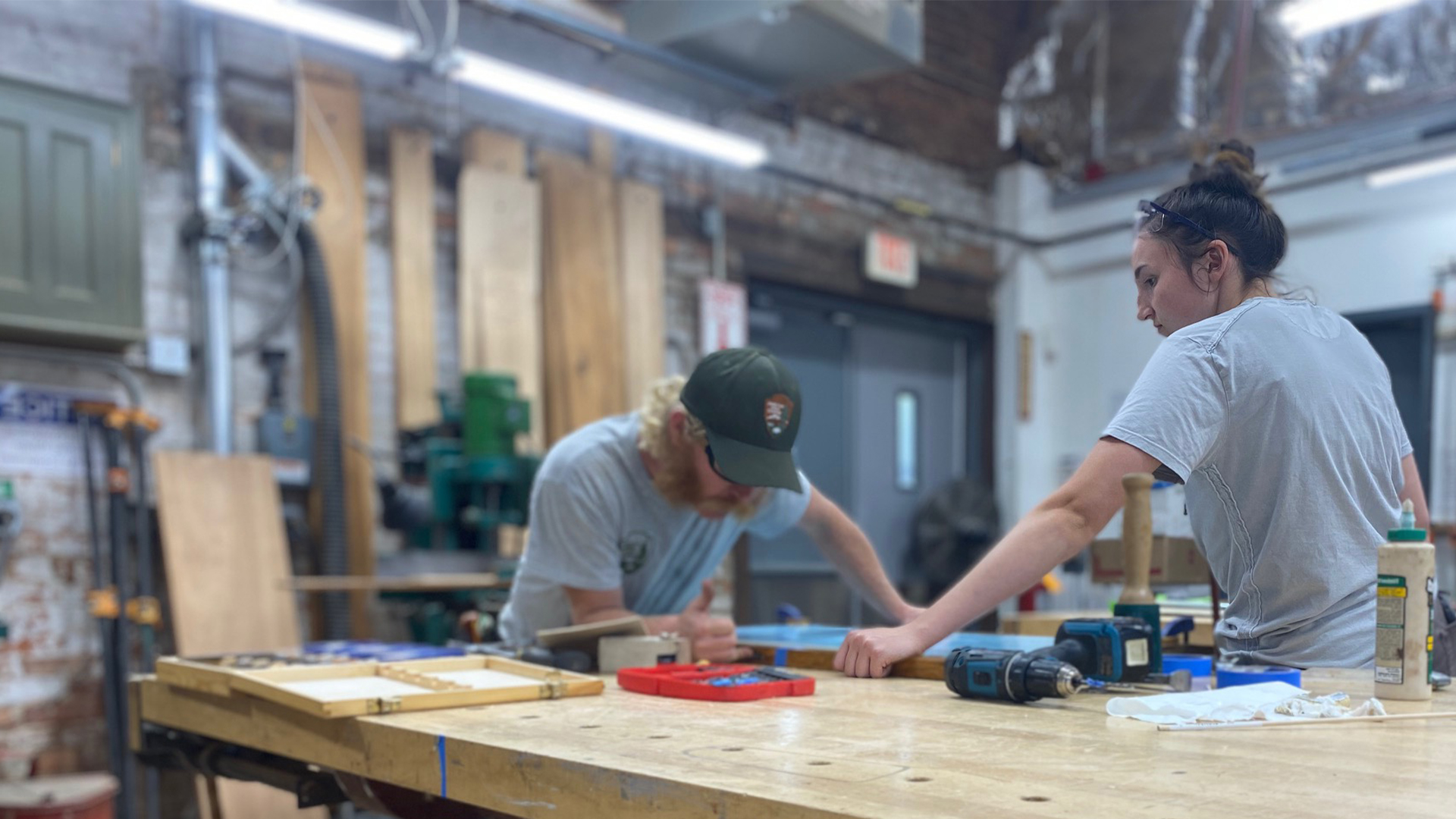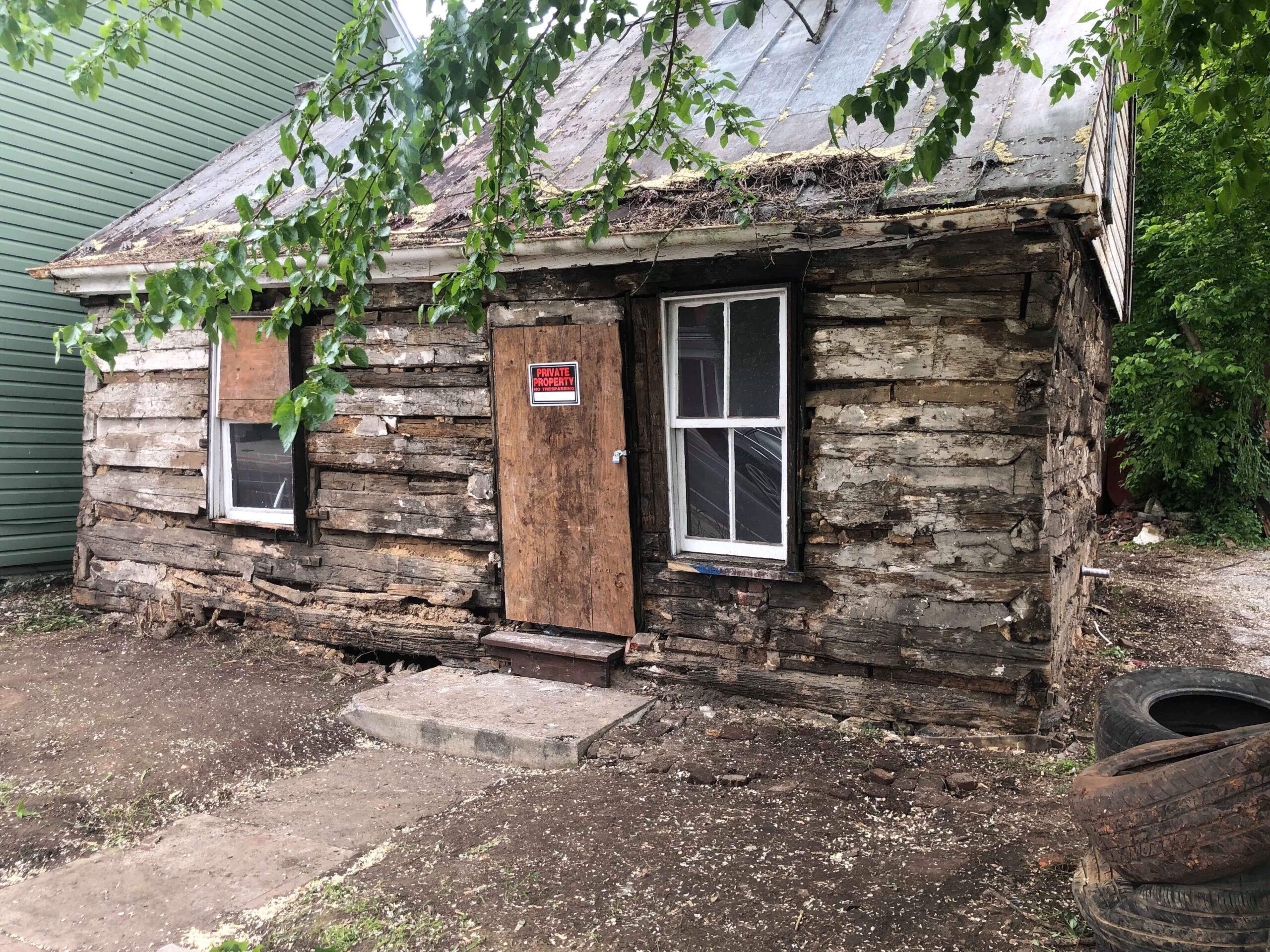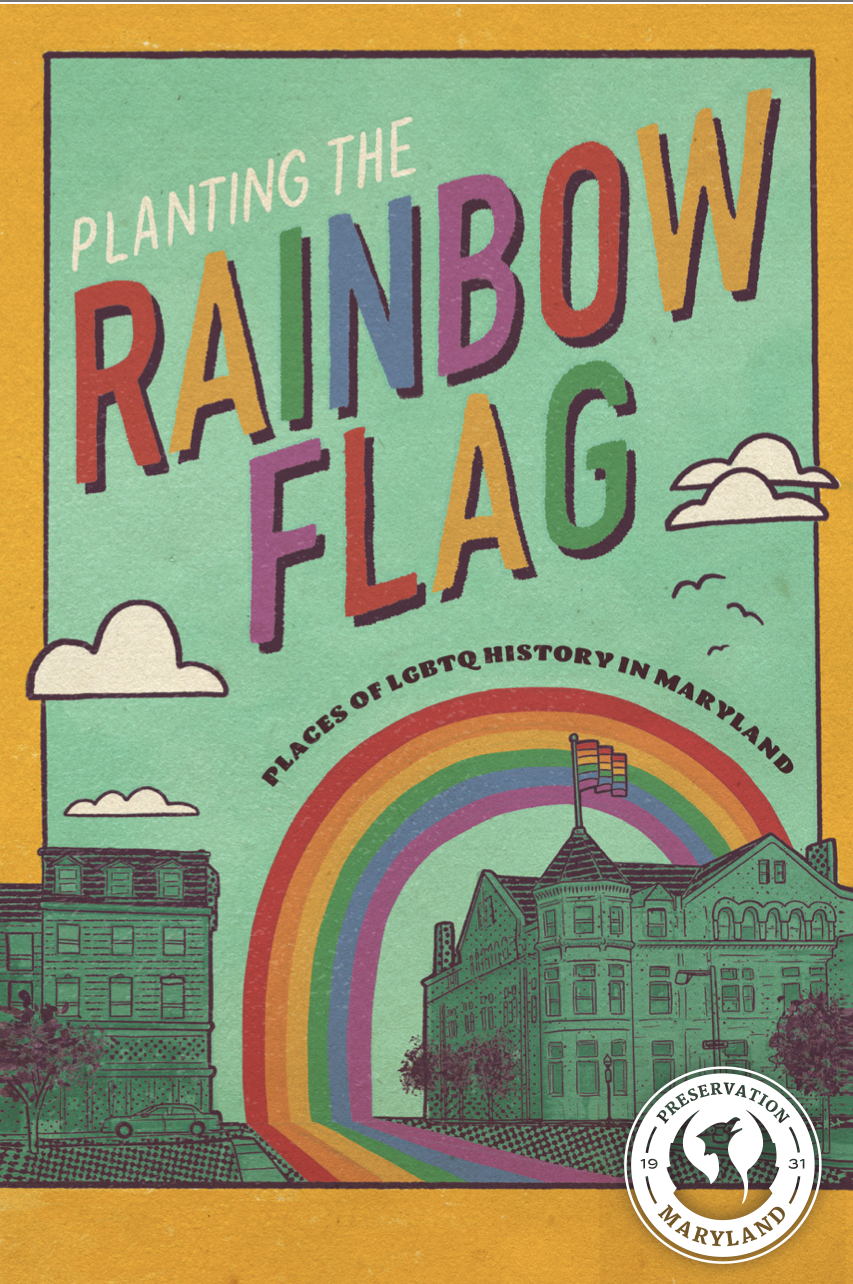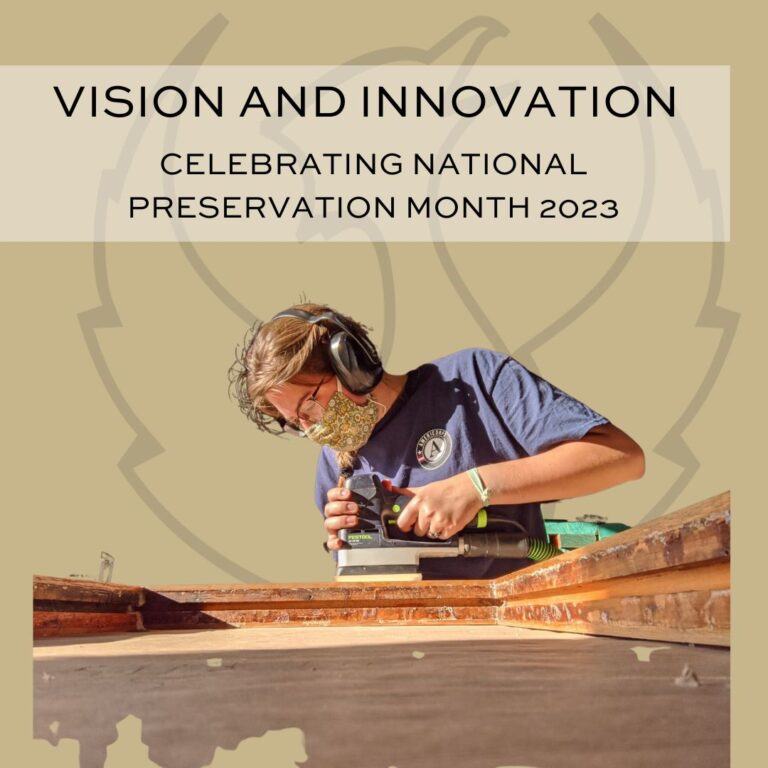Every May since 1973 – first as just a week and now for an entire month – the United States has celebrated National Preservation Month as a way to recognize the impact preservation has on historic places and communities.
To be a preservationist, you must be a forward-thinker. An optimist. You need vision to see what could be – and be innovative in your approach to get there.
That innovation can be seen in our programming and the way we address diverse issues across the state. Preservation isn’t just about saving historic places, at least not to us. It’s also about advocating for policies and funding that protect historic and cultural resources, creating a highly skilled historic trades workforce, and revitalizing communities.
Preservation as a Workforce Pipeline
Take, for example, Governor Wes Moore’s recently passed SERVE Act, which offers a paid service year to Maryland high school graduates. Preservation Maryland and our national workforce development program The Campaign for Historic Trades hope to play a role in providing opportunities for young adults to serve by restoring state-owned historic resources. For years we have served this mission, working with the National Park Service to recruit for a variety of internship programs where participants receive paid, hands-on training through opportunities like the Traditional Trades Advancement Program and Historic Stewards.
 And we know, backed by quantitative data, that the field of historic rehabilitation is large and growing. In November 2022, The Campaign released a first-of-its-kind labor study on the status of historic trades in America. The study, believed to be the most comprehensive survey ever prepared on the status of the traditional trades in the United States, shows the need for a larger and better-trained historic trades workforce – 100,000 workers are needed within the next decade.
And we know, backed by quantitative data, that the field of historic rehabilitation is large and growing. In November 2022, The Campaign released a first-of-its-kind labor study on the status of historic trades in America. The study, believed to be the most comprehensive survey ever prepared on the status of the traditional trades in the United States, shows the need for a larger and better-trained historic trades workforce – 100,000 workers are needed within the next decade.
Our work quantifying the disconnect between the need for historic preservation trades workers and the trained hands to perform the work supports the steps we are taking to lead the creation of an expanded workforce – an effort that transcends the preservation community.
Advocacy Often makes preservation possible
Preservation Maryland works at the federal, state, and local level to influence the policies, programs, and funding mechanisms that make preservation and smart growth possible. And the way this work impacts preservation is not always overt.
Late last year Preservation Maryland saw federal legislation, the Frederick Jobs and Historic Preservation Training Center Land Acquisition Act, pass in Congress, providing the National Park Service’s Historic Preservation Training Center, located in Frederick, Maryland, with the congressional authority to acquire up to 20 acres to build out a fully functioning center for historic trades training. The vastly increased footprint will also permit the Center to expand and host more trainees in Frederick and around the nation.
On its face, the acquisition of land doesn’t scream preservation, but it’s this kind of forward-thinking strategy that will now allow a new center to be built, more individuals to be trained, and more historic structures to be maintained.

Interns working at the Historic Preservation Training Center in Frederick, Md.
Similarly, our advocacy during the 2023 Legislative Session of the Maryland General Assembly saw the passage of SB0382, Accessory Dwelling Unit Promotion and Policy Task Force, creating a task force to study and make recommendations to expand Accessory Dwelling Units (ADUs) in Maryland. Again, there is not an immediate connection between ADUs and the preservation community, but we supported this legislation as ADUs are a simple way of creating more housing opportunities, especially in dense, built-out communities, like historic districts. We believe ADUs hold promise for our historic communities to play a part in addressing the state’s housing needs.
Revitalizing Communities

417 N. Jonathan Street – BEFORE (2019)
One of our most well-known recent projects, the c. 1830 cabin at 417 N. Jonathan Street in Hagerstown, turned an almost 200-year-old structure with significant history (in one of the state’s oldest African American neighborhoods and nearby well-documented Green Book sites), into owner-occupied affordable housing – in turn helping to build equity in the long-disinvested community. Through our Historic Property Redevelopment Program we directly invest in historic places and the surrounding neighborhoods to preserve heritage and revitalize communities. Our initiatives in Hagerstown are an example of how we work alongside community leaders to champion change and generate investment, using preservation to produce results. We’ve rehabbed a cabin into owner-occupied housing, teamed up with community members to produce an asset mapping resource, and supplemented Robert W. Johnson Community Center endeavors through funding and project management for a condition assessment report, much needed building repairs, and broadband upgrades.
Such work, coupled with years’-long dedication from community members to raise awareness of the neighborhood’s rich history and significant historical resources, helps bring attention to the effort to increase investment into the Jonathan Street community. We’re pleased to report the community recently received a $2.5 million grant from the State of Maryland grant to be used specifically for other community revitalization programs.
Other Work we’re celebrating
 As a statewide organization with extensive programming, you’ll also see our work in resources like the publications Revitalizing Rural Maryland: A Resource Guide for Communities and Planting the Rainbow Flag, an abridged version of an earlier report that illuminates Maryland LGBTQ+ history in rural, suburban, and urban locations, including sites associated with non-binary historical figures, leading “out” elected officials, strong community groups and popular gay bars, advocacy for AIDS treatment and marriage equality, and many other important sites.
As a statewide organization with extensive programming, you’ll also see our work in resources like the publications Revitalizing Rural Maryland: A Resource Guide for Communities and Planting the Rainbow Flag, an abridged version of an earlier report that illuminates Maryland LGBTQ+ history in rural, suburban, and urban locations, including sites associated with non-binary historical figures, leading “out” elected officials, strong community groups and popular gay bars, advocacy for AIDS treatment and marriage equality, and many other important sites.
The Heritage Fund, a cooperative effort of Preservation Maryland and the Maryland Historical Trust, provides direct assistance for the protection of historical and cultural resources and promotes innovative demonstration projects that can be successfully replicated to meet Maryland’s historic preservation needs. The Fund is intended to serve the needs of tangible cultural resources in Maryland. Read about the success of some past projects here and here.
Now 275 episodes in, our weekly podcast PreserveCast, the #1 historic preservation podcast with listeners across the globe, explores the broad world of preservation and the work being done to preserve, interpret, and save our past in a 21st-century world.

